
TASCHEN Unpacks the Kaleidoscopic Universe of Italian Architect & Designer Gio Ponti
Words by Yatzer
Location
TASCHEN Unpacks the Kaleidoscopic Universe of Italian Architect & Designer Gio Ponti
Words by Yatzer
If there’s one epithet that can adequately convey the creative genius of “the father of modern Italian design” Gio Ponti is a Renaissance man. An architect by profession, Ponti was also a pioneering designer, artist, art director, teacher, publisher and poet, a true polymath in other words whose oeuvre over six decades left an indelible mark on Italy. “GIO PONTI”, a new kaleidoscopic book by TASCHEN, traces Ponti’s prolific career through 136 multi-disciplinary projects, from the landmark Pirelli Tower in Milan and Villa Planchart in Caracas, to his iconic chairs for Cassina and pendant lights for Fontane Arte, to lesser-known creations like porcelain vases and silver cutlery, as well as his work for Domus, the influential design and architecture magazine he founded in 1928. Shaped in close collaboration with Ponti’s grandson and founder of the Gio Ponti Archives, Salvatore Licitra, the 572-page hardcover is packed with unpublished imagery and insightful texts, including an extensive biographical essay by Italian writer and designer Stefano Casciani, rendering it the most comprehensive and immersive account of Ponti’s work to date.
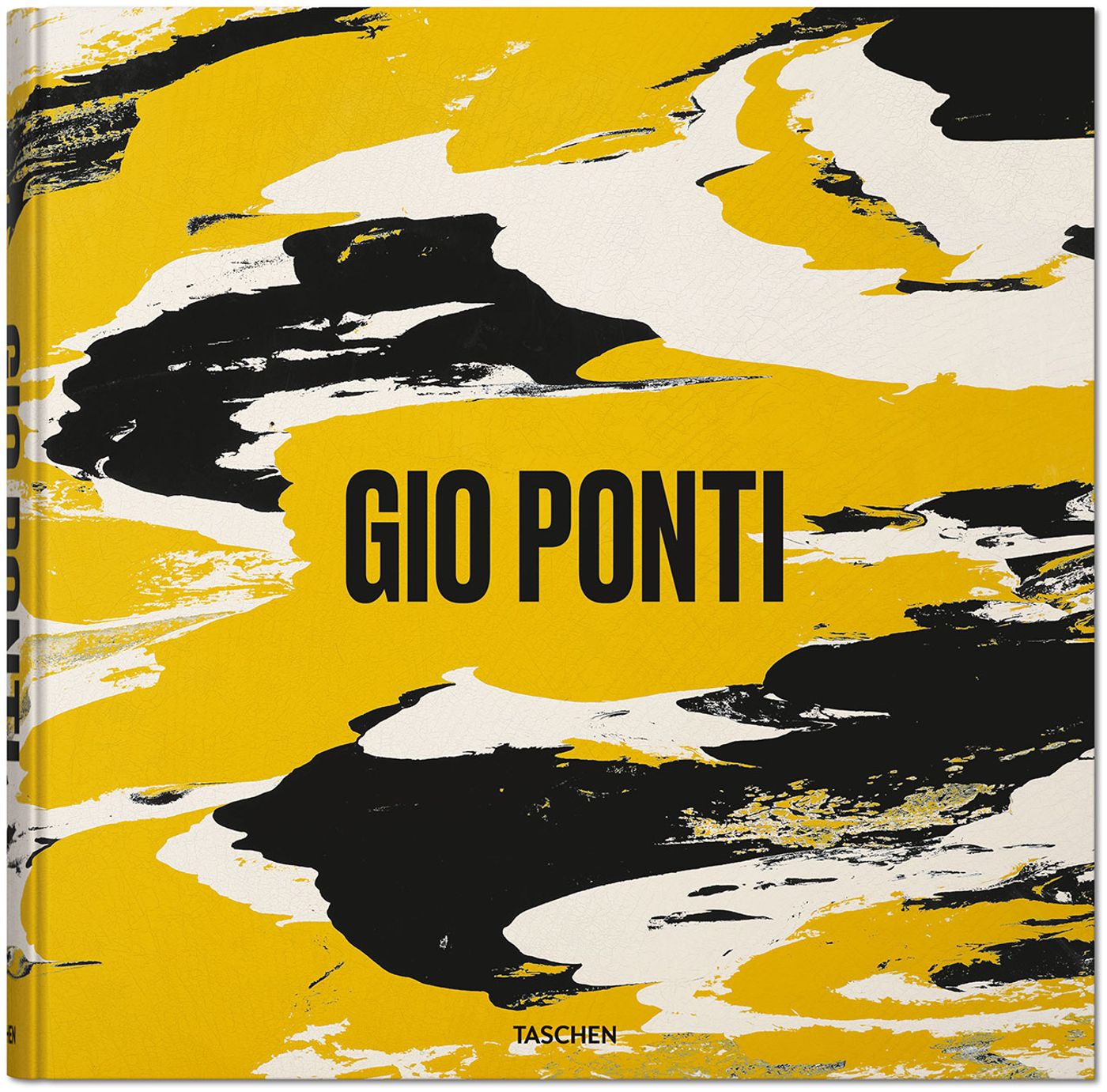
Book cover. GIO PONTI - TASCHEN.Photo © TASCHEN

Gio Ponti and his son Giulio at the New York Alitalia offices, with the Superleggera chairs produced by Cassina, 1957. © Gio Ponti Archives/ Historical Archive of Ponti’s Heirs. Photo by Dan Wynn.
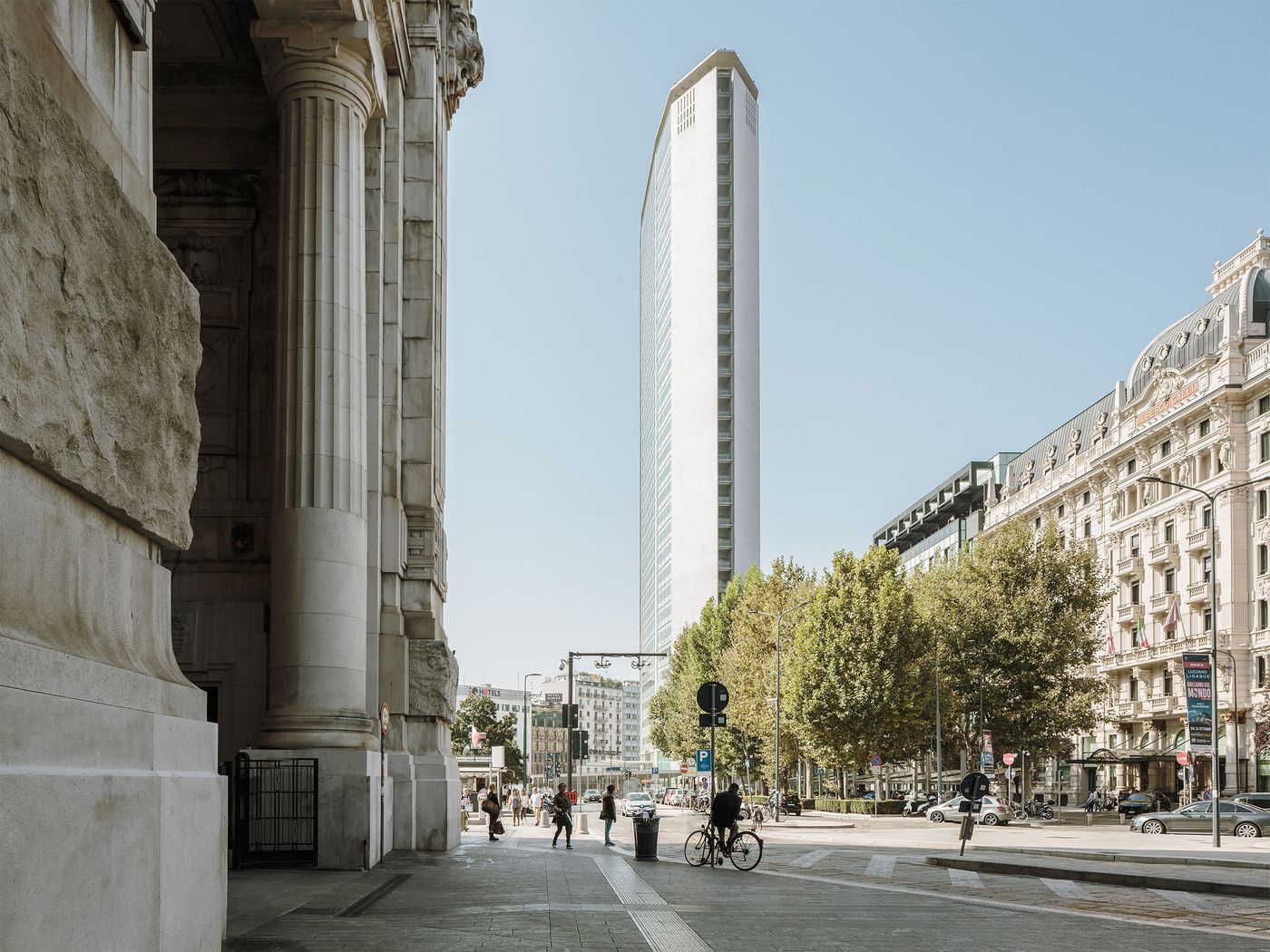
Pirelli Tower, Milan, 1956–60.
Photo © Luca Rotondo.
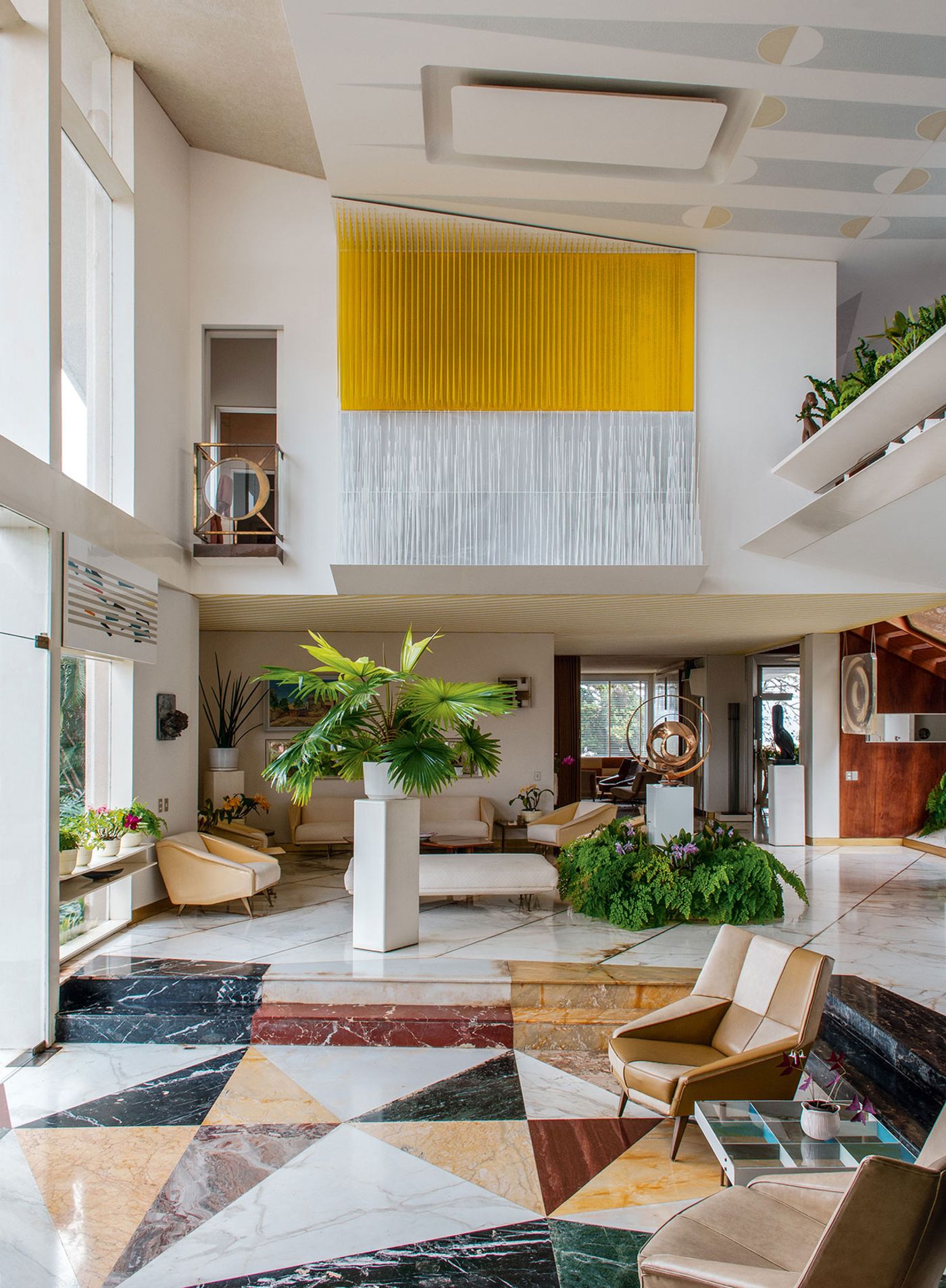
Interior of the Villa Planchart, Caracas, Venezuela, 1953–57.
The main double-height reception room, which is split on two levels, each defined by a distinct floor pattern and furniture arrangement. In the foreground, Ponti debuted his Mariposa armchairs (Cassina, model 851 of 1954), made by Cassina, in leather upholstery. At the back, a set of armchairs and a sofa from the Diamond line (also of 1954). Hanging above, there is a site-specific installation by Jesus Rafael Soto, added after Ponti completed the villa. To the left, a small loggia, with a moon emblem, leads to the master bedroom. A secondary balcony with a sun emblem is directly opposite across the space, in front of the guest bedroom.
Photo © Antoine Baralh

Interior of the Villa Planchart, Caracas, Venezuela, 1953–57.
View of the main dining room. The painted tabletops, fragmented marble floor slabs, and illuminated ceiling that is partially in relief visually engage together. All tables and surface designs were custom designed by Ponti and made by Giordano Chiesa. Ponti also designed the elongated and salient brass wall sconces, custom-made by Arredoluce, 1957.
Photo © Antoine Baralhe.
"The most resistant element is not wood, is not stone, is not steel, is not glass. The most resistant element in building is art. Let’s make something very beautiful." -Gio Ponti

Gio Ponti with Piero Fornasetti, Zodiac Suite, ocean liner Andrea Doria, 1950.
Colored photograph from an Andrea Doria advertising brochure. Ponti and Fornasett achieved a game of reversals with the blue-and-white pattern on pattern, engulfing the entire room and distorting spatial reading, but with an unexpected intimacy of enchantment.
Photo courtesy Paolo Piccione Collection.
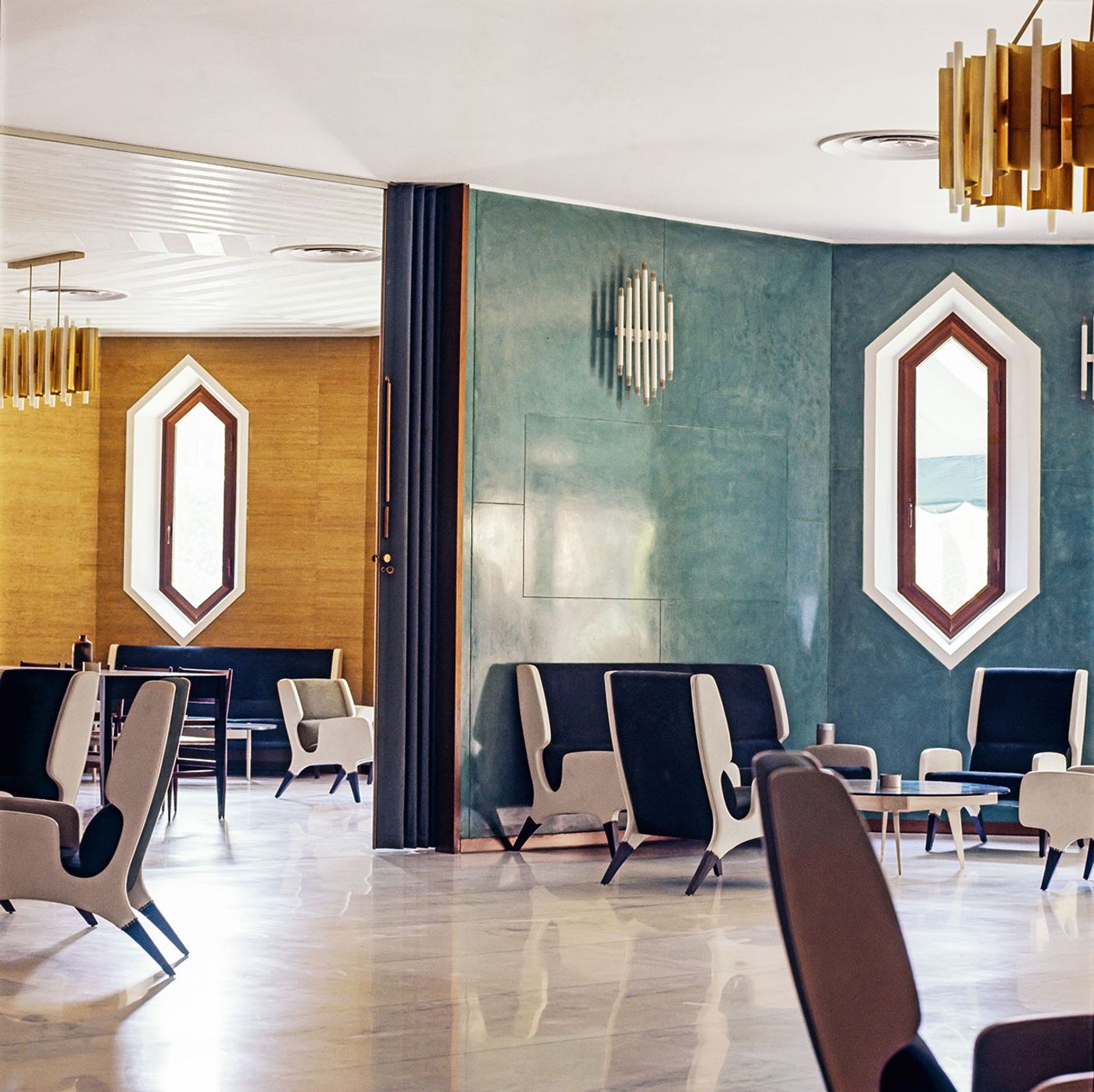
Hotel Parco dei Principi, Rome, 1961–64.
View of the lobby. The walls are covered with “Grass Cloth” wallpaper by Braendli and teal-green “Sigmulto” stucco by Sigma. The space is furnished with armchairs and sofas (model 899) and coffee tables produced by Cassina. Wall sconces and ceiling lights were designed by Ponti with Emanuele Ponzio, realized by Candle, 1960. The hexagonal bronze window frames were manufactured by the Del Vecchio factory of Fano.
Photo © Gio Ponti Archives/ Historical Archive of Ponti’s Heirs.
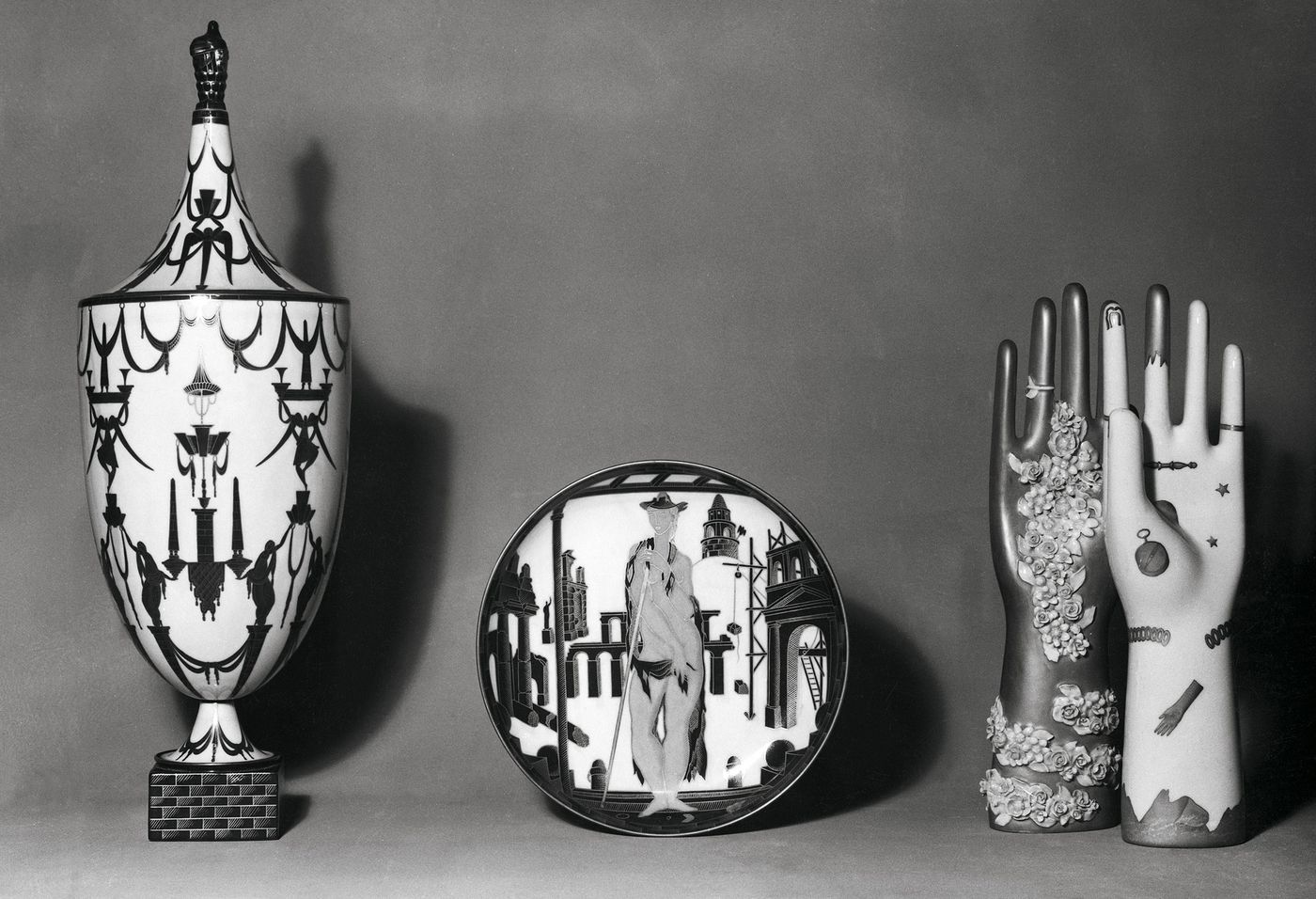
Porcelain designs for Richard-Ginori, 1925–35.
Photo © Gio Ponti Archives / Historical Archive of Ponti’s Heirs.
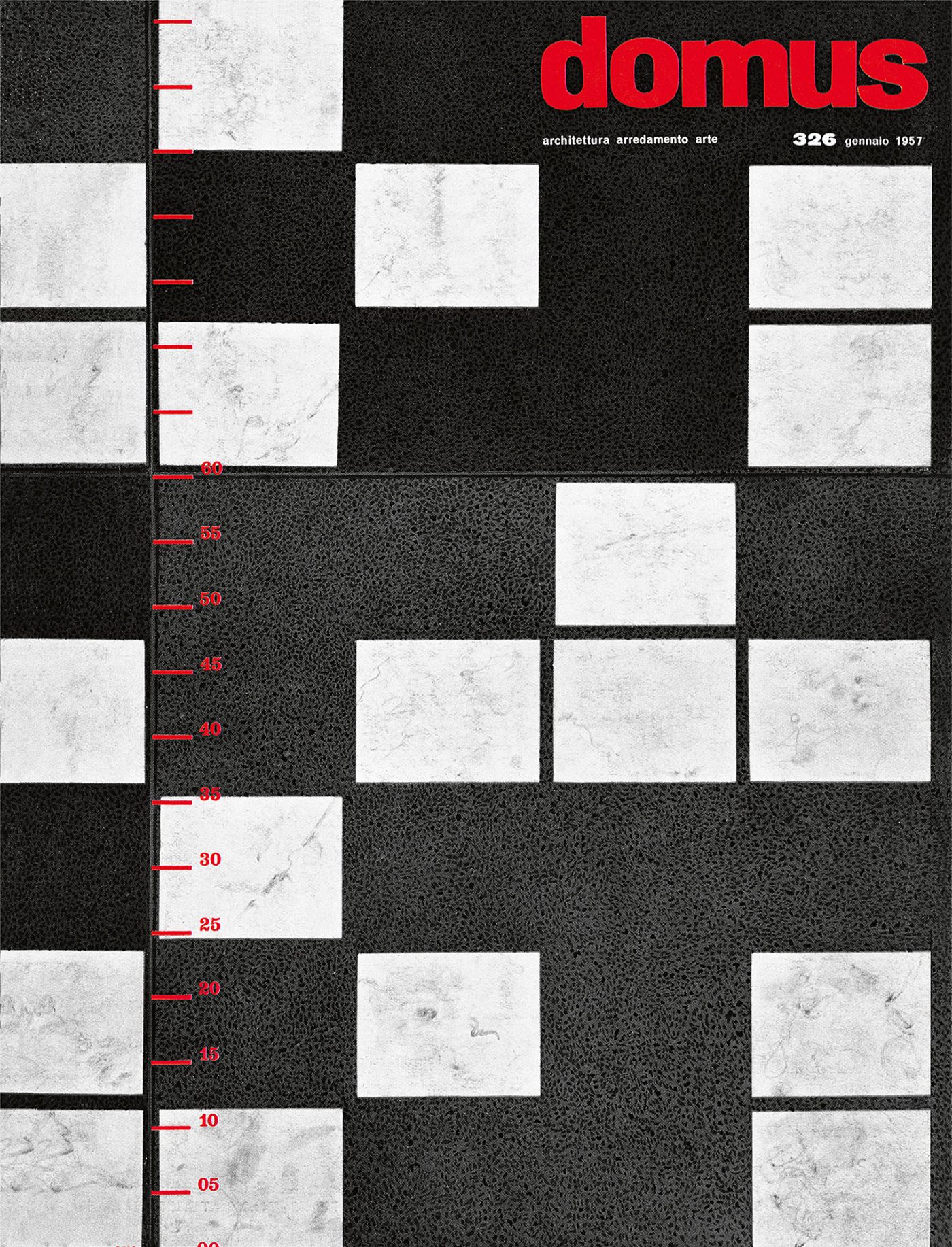
Cover by Gio Ponti for Domus 326, January 1957, showing his patterned floor surfaces using white marble slabs interspersed with sections of black cement with black stone insets. Produced by Fulget.
If the 5.7kg, 572-page hardcover isn’t enough to immerse you into Ponti’s kaleidoscopic universe, TASCHEN is offering a numbered Art Edition (No. 1–1,000) which is accompanied by a reproduction of the iconic Arlecchino lattice coffee table, which was originally designed in 1954 for Villa Planchart, and a set of four numbered prints of Ponti’s interior ocean liner studies from 1948-1949. Inspired by the visual language of De Stijl artists Piet Mondrian and Theo van Doesburg, the "Planchart Coffee Table” is reissued by Molteni&C for TASCHEN in an exclusive square format that speak of Ponti’s work as the synthesis of the arts as well as exemplifies the lightness of his iconic style.
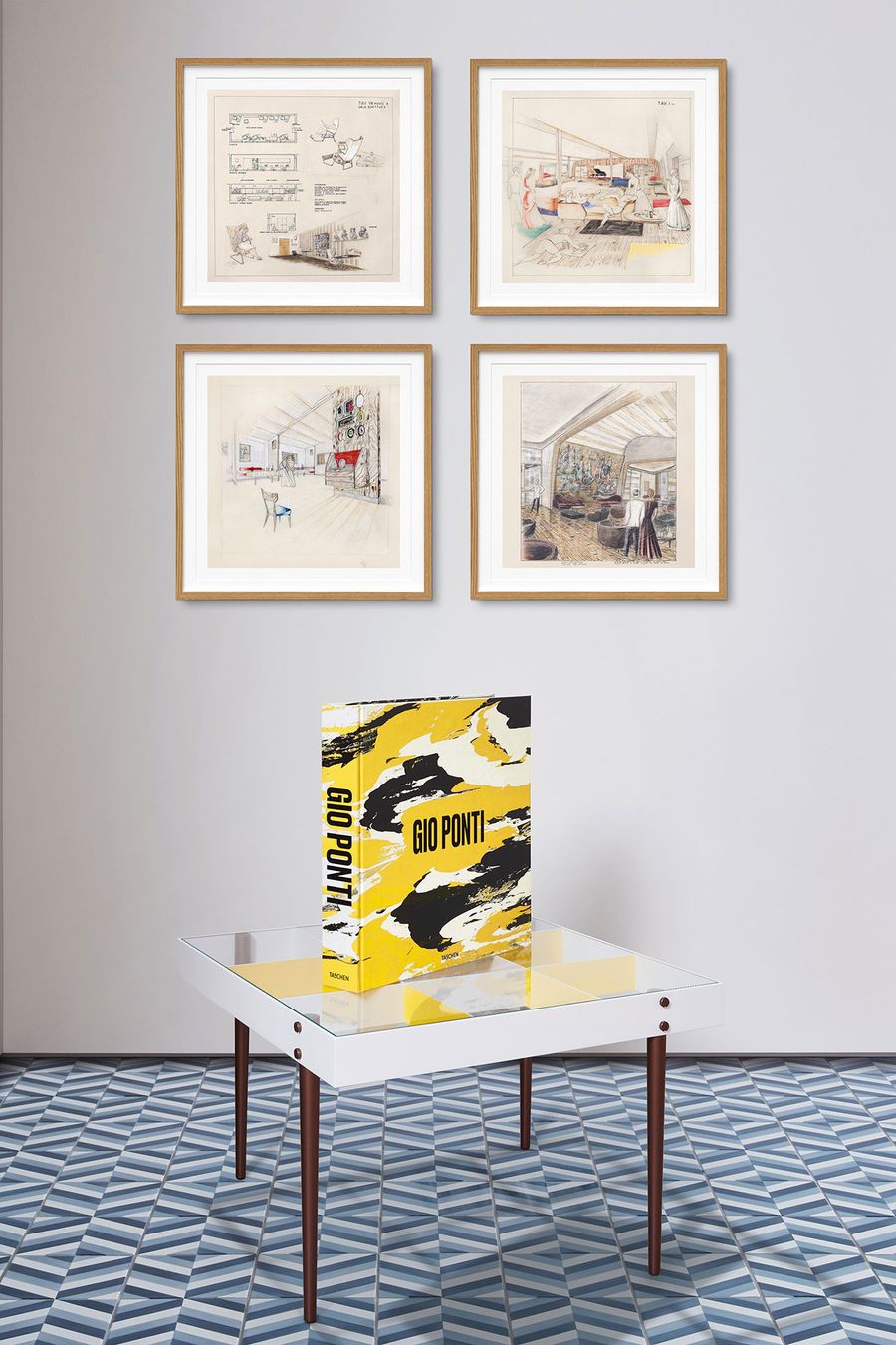
Photo © TASCHEN
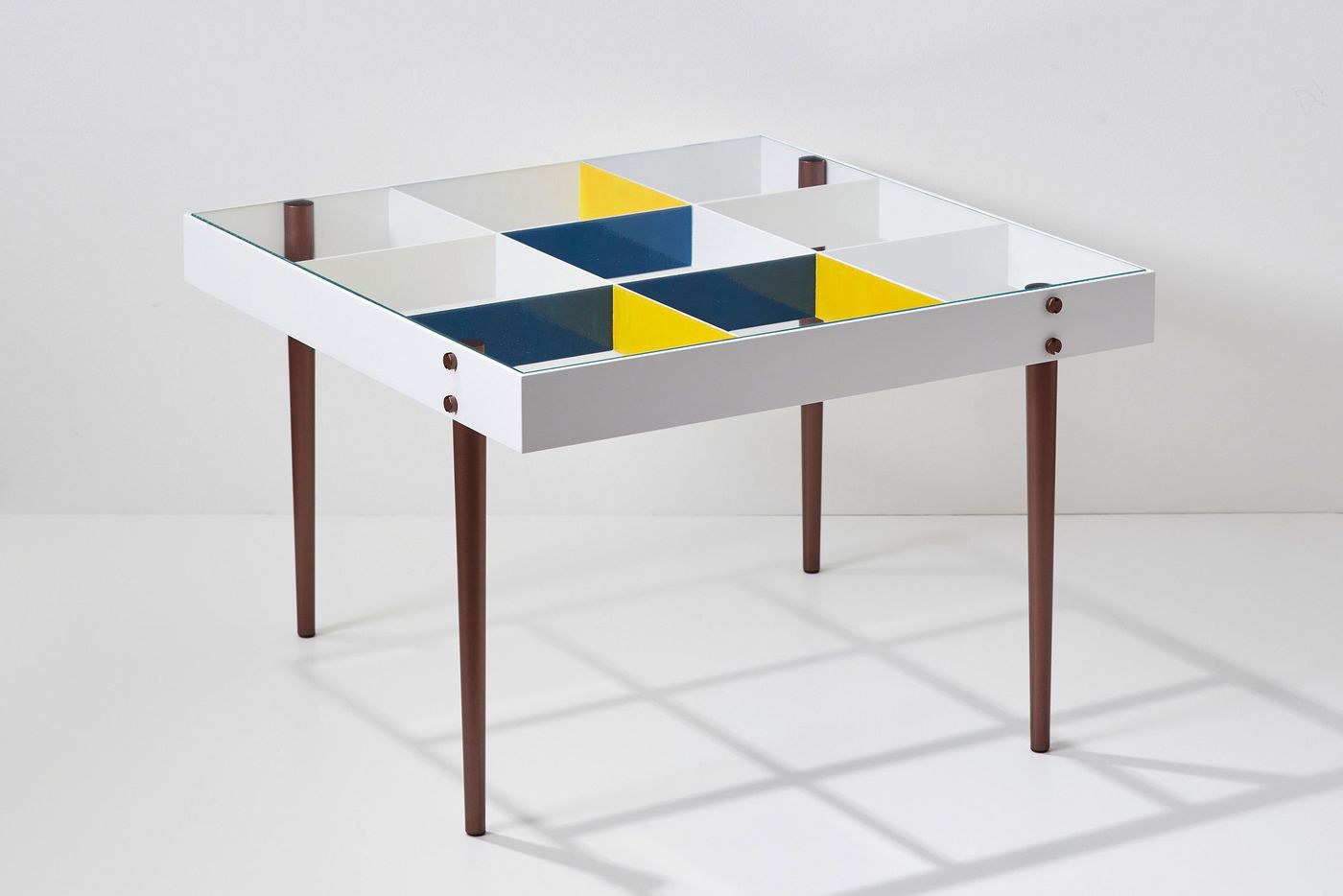
"Planchart Coffee Table”, 1954. Reissued by Molteni&C for TASCHEN.
Photo © TASCHEN
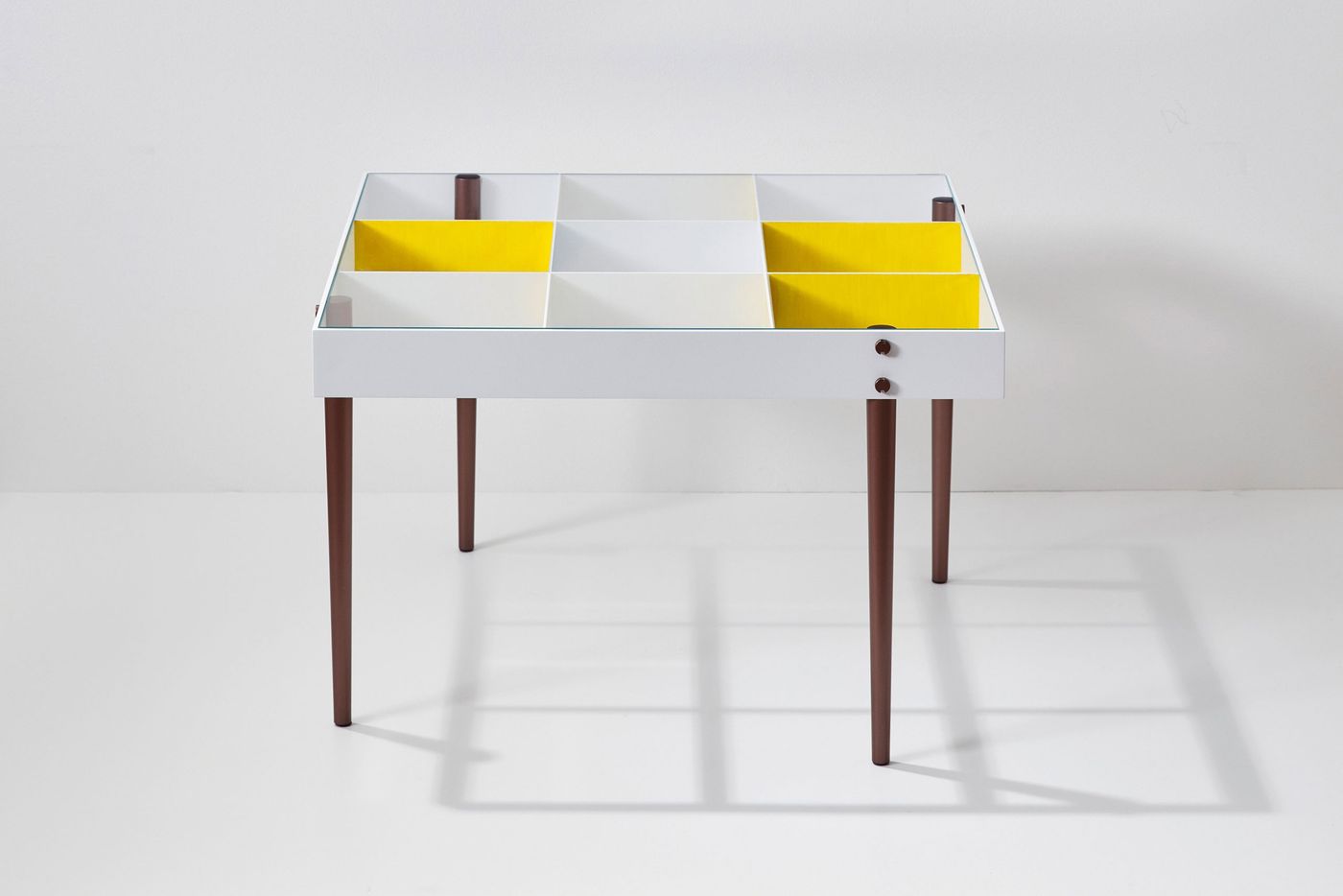
"Planchart Coffee Table”, 1954. Reissued by Molteni&C for TASCHEN.
Photo © TASCHEN